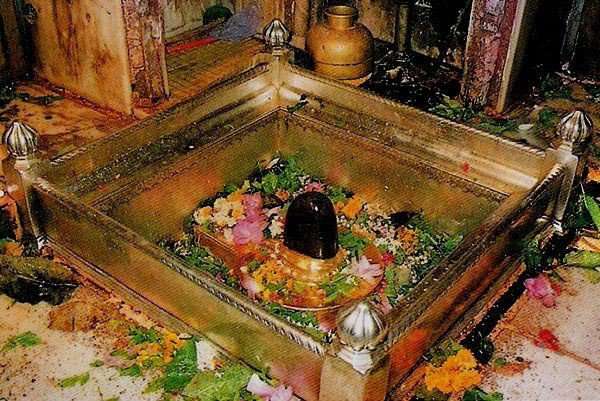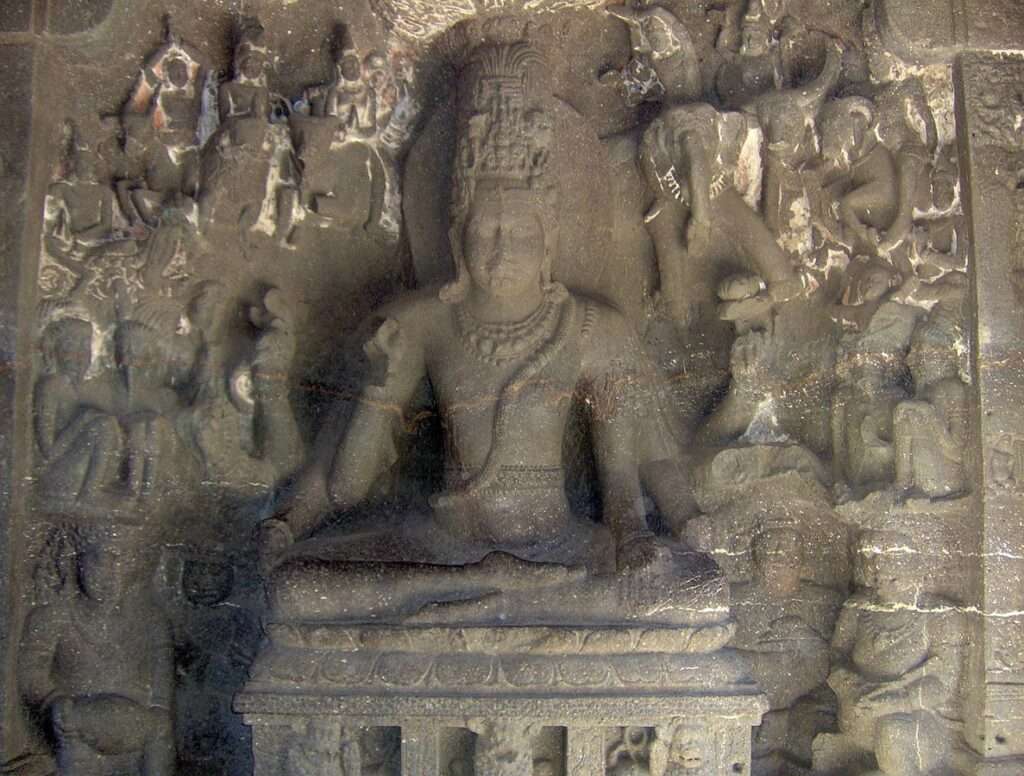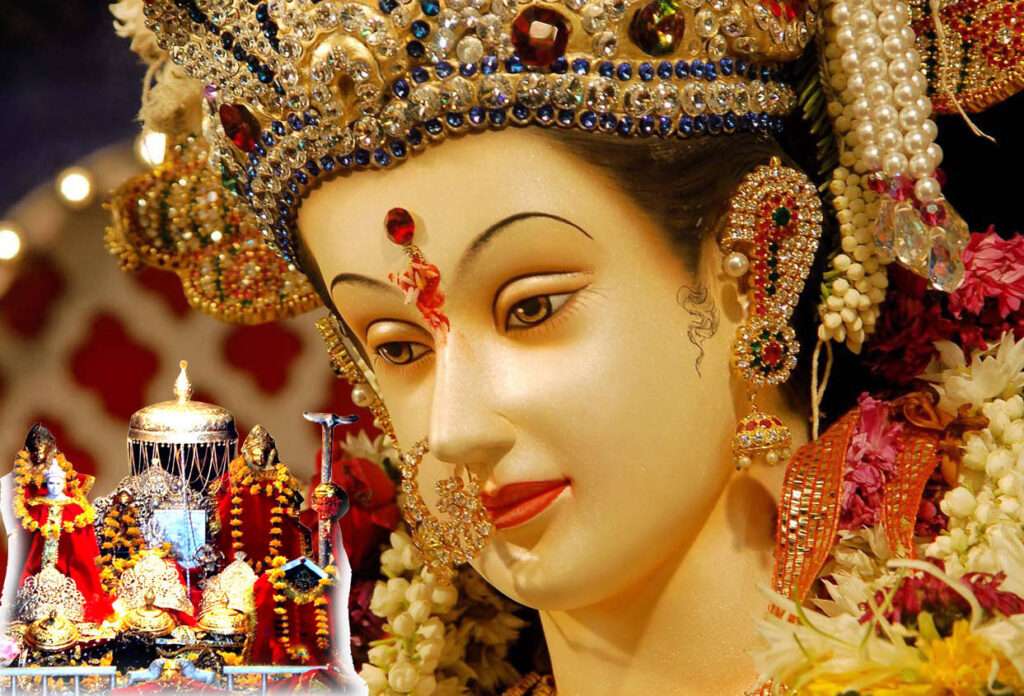Introduction
Kashi Vishwanath Temple is one of the most famous Hindu temples dedicated to Lord Shiva. It is located in Vishwanath Gali of Varanasi, Uttar Pradesh in India. The temple is one of the twelve Jyotirlingas, which are considered to be the most sacred manifestations of Shiva. The temple is also known as the Golden Temple because of its gold-plated domes and spires.
In this blog post, I will share with you my experience of visiting this holy shrine and exploring its history, architecture, rituals, and significance. I will also give you some tips on how to plan your trip and what to expect when you reach there. If you are a devotee of Lord Shiva or a spiritual seeker, you will find this post informative and inspiring.
Table of Contents
Why Visit Kashi Vishwanath Temple?
Kashi Vishwanath Temple is not just a place of worship, but a symbol of faith, culture, and tradition. It is believed that visiting this temple can grant one liberation from the cycle of birth and death. According to Hindu scriptures, Varanasi is the oldest living city in the world and the abode of Lord Shiva. It is said that whoever dies here attains salvation (moksha). The temple is also associated with many legends and miracles that testify to its divine power and glory.
Some of the reasons why you should visit Kashi Vishwanath Temple are:
To witness the majestic beauty and splendor of the temple and its surroundings.
To experience the spiritual energy and vibrations that emanate from the temple.
To participate in the daily rituals and ceremonies that are performed at the temple.
To seek blessings and fulfill your wishes by offering prayers and offerings to Lord Shiva.
To immerse yourself in the rich culture and heritage of Varanasi and its people.
How to Reach Kashi Vishwanath Temple?
Kashi Vishwanath Temple is located in the heart of Varanasi, near the banks of the river Ganga. It is easily accessible by various modes of transport such as road, rail, and air.
By Road: Varanasi is well connected by road to major cities in India such as Delhi, Kolkata, Mumbai, Lucknow, Allahabad, etc. You can take a bus or a taxi from any of these cities to reach Varanasi. From Varanasi bus stand or railway station, you can hire an auto-rickshaw or a cycle-rickshaw to reach Vishwanath Gali, where the temple is situated. You can also walk from the nearby ghats (steps leading to the river) such as Dashashwamedh Ghat or Manikarnika Ghat to reach the temple.
By Rail: Varanasi has two railway stations: Varanasi Junction (also known as Varanasi Cantt) and Varanasi City. Both these stations are well connected by trains to major cities in India such as Delhi, Kolkata, Mumbai, Lucknow, Allahabad, etc. You can take a train from any of these cities to reach Varanasi. From Varanasi Junction or Varanasi City railway station, you can hire an auto-rickshaw or a cycle-rickshaw to reach Vishwanath Gali, where the temple is situated. You can also walk from the nearby ghats (steps leading to the river) such as Dashashwamedh Ghat or Manikarnika Ghat to reach the temple.
By Air: Varanasi has an international airport called Lal Bahadur Shastri Airport (also known as Babatpur Airport). It is located about 25 km from the city center. The airport is well connected by flights to major cities in India such as Delhi, Kolkata, Mumbai, Lucknow, Allahabad, etc. You can take a flight from any of these cities to reach Varanasi. From Varanasi airport, you can hire a taxi or a cab to reach Vishwanath Gali, where the temple is situated.
| City | Distance (km) | Travel time (hrs) |
|---|---|---|
| Delhi | 700 | 10 |
| Mumbai | 1,350 | 16 |
| Kolkata | 850 | 12 |
| Chennai | 1,650 | 20 |
| Prayagraj (Allahabad) | 200 | 3 |
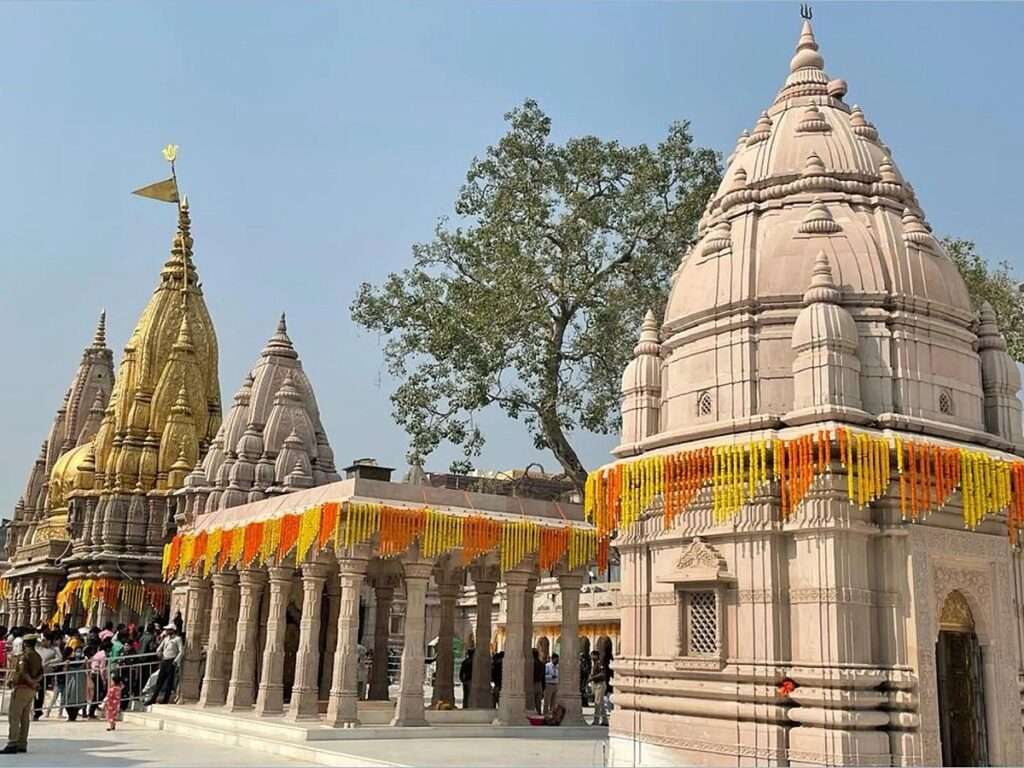
What are the Timings and Entry Fees of Kashi Vishwanath Temple?
Kashi Vishwanath Temple is open for visitors every day from 2:30 am to 11:00 pm. However, there are different timings for different rituals and ceremonies that are performed at the temple. Here are the timings and entry fees of Kashi Vishwanath Temple:
Mangala Aarti: This is the first and the most important ritual that is performed at the temple every morning. It starts at 2:30 am and lasts for about an hour. During this ritual, the priests perform a special worship of Lord Shiva with chants, hymns, and offerings. The devotees can witness this ritual by paying a fee of Rs. 300 per person. They have to book their tickets online in advance from the official website of the temple (https://www.shrikashivishwanath.org/). Only 300 devotees are allowed to attend this ritual per day.
Bhog Aarti: This is the second ritual that is performed at the temple every morning. It starts at 11:15 am and lasts for about 15 minutes. During this ritual, the priests offer food (bhog) to Lord Shiva and distribute it among the devotees. The devotees can witness this ritual by paying a fee of Rs. 180 per person. They have to book their tickets online in advance from the official website of the temple (https://www.shrikashivishwanath.org/). Only 625 devotees are allowed to attend this ritual per day.
Sandhya Aarti: This is the third ritual that is performed at the temple every evening. It starts at 7:00 pm and lasts for about 45 minutes. During this ritual, the priests perform a grand worship of Lord Shiva with lamps, incense, and flowers. The devotees can witness this ritual by paying a fee of Rs. 180 per person. They have to book their tickets online in advance from the official website of the temple (https://www.shrikashivishwanath.org/). Only 625 devotees are allowed to attend this ritual per day.
Shringar Aarti: This is the fourth ritual that is performed at the temple every night. It starts at 9:00 pm and lasts for about 30 minutes. During this ritual, the priests adorn Lord Shiva with ornaments, clothes, and cosmetics. The devotees can witness this ritual by paying a fee of Rs. 180 per person. They have to book their tickets online in advance from the official website of the temple (https://www.shrikashivishwanath.org/). Only 625 devotees are allowed to attend this ritual per day.
Shayan Aarti: This is the fifth and the last ritual that is performed at the temple every night. It starts at 10:30 pm and lasts for about 30 minutes. During this ritual, the priests put Lord Shiva to sleep with songs, prayers, and offerings. The devotees can witness this ritual by paying a fee of Rs. 180 per person. They have to book their tickets online in advance from the official website of the temple (https://www.shrikashivishwanath.org/). Only 625 devotees are allowed to attend this ritual per day.
Apart from these rituals, there are other ceremonies that are performed at the temple on special occasions such as Maha Shivaratri, Shravan month, Dev Deepawali, etc. The timings and entry fees of these ceremonies may vary depending on the occasion.
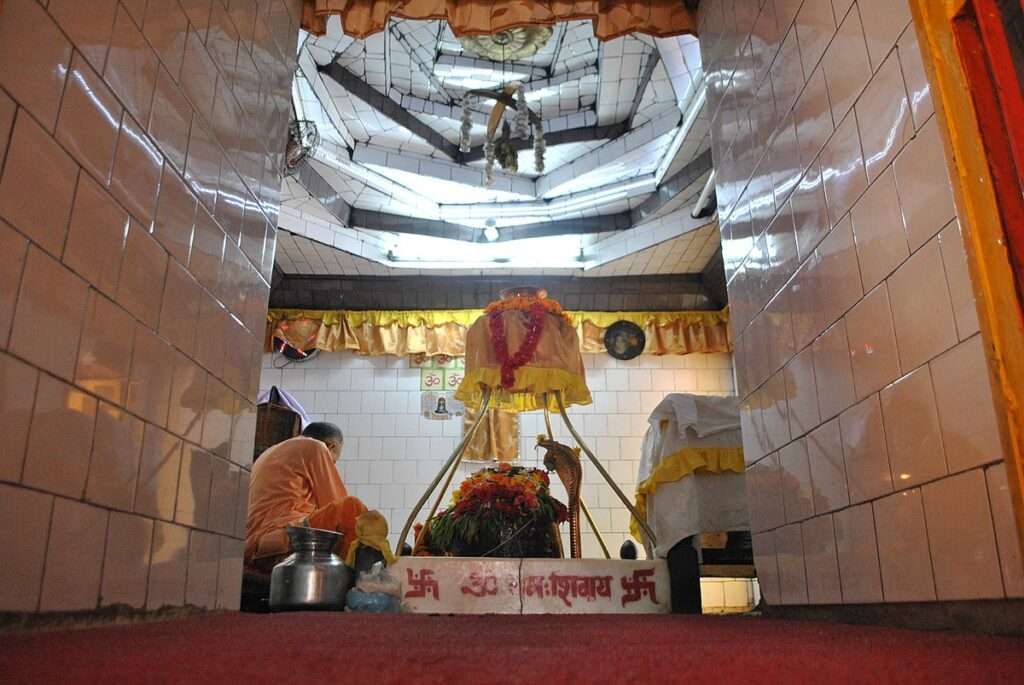
Significance of Kashi Vishwanath Temple
Kashi Vishwanath Temple is not only a place of worship, but also a symbol of faith, culture and identity for millions of Hindus. The temple represents the essence of Hinduism, which is based on the concept of Sanatana Dharma, or eternal law. The temple also embodies the belief that life is a cycle of birth, death and rebirth, and that liberation from this cycle can be attained by devotion to Lord Shiva.
The main deity of the temple is a lingam (a phallic symbol of Shiva) made of black stone, which is housed in a silver-plated sanctum sanctorum. The lingam is said to be self-manifested and has no beginning or end. It is adorned with flowers, sandalwood paste, vermilion and other offerings by the devotees. The lingam is also known as Vishweshwara, or the lord of the universe.
The temple is also associated with many legends and miracles. One of them is that Lord Shiva himself appeared in a dream to a devotee named Pandit Madhav Puri and told him to dig at a certain spot near the river. When he did so, he found a shining lingam buried under the ground. He then built a small shrine around it, which later became the Kashi Vishwanath Temple.
Another legend is that Lord Shiva once granted a boon to his devotee Ravana, the king of Lanka, who wanted to take his lingam to his kingdom. However, he warned him not to put it down anywhere on his way. Ravana agreed, but was tricked by Lord Vishnu and Lord Ganesha into leaving it at Varanasi. When he tried to lift it again, he found it immovable. He then realized his mistake and prayed to Lord Shiva for forgiveness.
Rituals and Festivals of Kashi Vishwanath Temple
Kashi Vishwanath Temple is a hub of religious activities and celebrations throughout the year. The temple follows a strict schedule of daily rituals, which include four main aartis (ritualistic worship with lamps) and five bhogas (offerings of food). The timings of these rituals vary according to the seasons and lunar phases.
The first aarti is called Mangala Aarti, which takes place before sunrise. It is the most important and sacred aarti, as it marks the awakening of Lord Shiva. The second aarti is called Bhog Aarti, which takes place around noon. It is the time when Lord Shiva is offered various delicacies as food. The third aarti is called Sandhya Aarti, which takes place at sunset. It is the time when Lord Shiva is offered various fragrances as incense. The fourth aarti is called Shringar Aarti, which takes place at night. It is the time when Lord Shiva is adorned with various ornaments and clothes.
The temple also observes many festivals and occasions throughout the year, which attract thousands of devotees from all over the world. Some of the major festivals are:
Maha Shivaratri: This is the most auspicious and grand festival of Lord Shiva, which falls on the 14th night of the dark fortnight in February or March. On this day, devotees fast, chant, meditate and offer prayers to Lord Shiva throughout the night. They also perform abhishekam (ritual bathing) of the lingam with milk, water, honey, curd, ghee and other substances.
Shravan Maas: This is the holy month of Lord Shiva, which falls in July or August. During this month, devotees observe various vows and rituals in honor of Lord Shiva. They also offer bilva leaves (a sacred leaf of Shiva) to the lingam every day. On Mondays, which are dedicated to Lord Shiva, they perform special pujas (worship) and offer water from the Ganga to the lingam.
Dev Deepawali: This is the festival of lights, which falls on the full moon day in November or December. On this day, devotees light thousands of earthen lamps on the ghats (steps) along the river Ganga. They also offer flowers, sweets and other items to Lord Shiva and Goddess Ganga. The temple and its surroundings are illuminated with colorful lights and fireworks.
Akshaya Tritiya: This is an auspicious day for wealth and prosperity, which falls on the third day of the bright fortnight in April or May. On this day, devotees donate gold, silver and other valuables to Lord Shiva and his consort Goddess Parvati. They also buy new clothes, jewelry and other items for themselves and their families.
What are the Do’s and Don’ts of Kashi Vishwanath Temple?
Kashi Vishwanath Temple is a sacred place of worship and reverence. Therefore, there are some do’s and don’ts that you should follow when you visit the temple. Here are some of them:
Do dress modestly and respectfully when you visit the temple. Avoid wearing shorts, skirts, sleeveless tops, or any revealing clothes.
Do remove your shoes before entering the temple premises. There are shoe racks available outside the temple where you can keep your shoes safely.
Do carry your identity proof such as Aadhaar card, passport, or voter ID card when you visit the temple. You may be asked to show it at the security check or while booking your tickets online.
Do maintain silence and decorum inside the temple. Avoid talking loudly, using mobile phones, or taking photographs or videos inside the temple.
Do follow the instructions and guidelines given by the temple authorities and staff. Respect their authority and cooperate with them.
Do make donations or offerings to Lord Shiva or his priests only through authorized channels such as donation boxes or counters. Avoid giving money or valuables to any unauthorized person or beggar inside or outside the temple.
Don’t carry any leather items such as belts, wallets, bags, etc. inside the temple premises. They are considered impure and disrespectful to Lord Shiva.
Frequently asked questions
1. What is the significance of the Ganga Aarti at Kashi Vishwanath Temple? The Ganga Aarti at Kashi Vishwanath Temple is a mesmerizing and spiritual ceremony that takes place every evening at the Dashashwamedh Ghat, situated on the banks of the River Ganges. During the Aarti, priests offer prayers to the Ganges River, seeking blessings for the well-being of humanity and the world. The event is attended by numerous devotees and tourists and is a sight to behold.
2. Are there any specific dress code and guidelines for visiting the temple? Yes, visitors are expected to dress modestly while visiting the Kashi Vishwanath Temple. It is customary to remove shoes and all leather items before entering the temple premises. Modest clothing that covers the shoulders and knees is recommended as a mark of respect.
3. What are the main festivals celebrated at the Kashi Vishwanath Temple? Several festivals are celebrated with great enthusiasm at the Kashi Vishwanath Temple. Some of the major festivals include Mahashivaratri, Navratri, Diwali, and Kartik Purnima. During these festivals, the temple and the surrounding area witness an influx of devotees and various special events and ceremonies take place.
4. Is photography allowed inside the Kashi Vishwanath Temple? As of my last update, photography was generally not allowed inside the main sanctum of the temple. However, you can take pictures in the temple courtyard and the surrounding areas. It’s always better to respect the rules and guidelines to maintain the sanctity of the religious place.
5. How long does it take for the darshan (sacred viewing) at the temple? The time taken for darshan at Kashi Vishwanath Temple can vary depending on the crowd and the time of your visit. On regular days, it may take around 30 minutes to an hour, but during peak seasons and festivals, the waiting time can be longer. It’s best to plan your visit accordingly.
